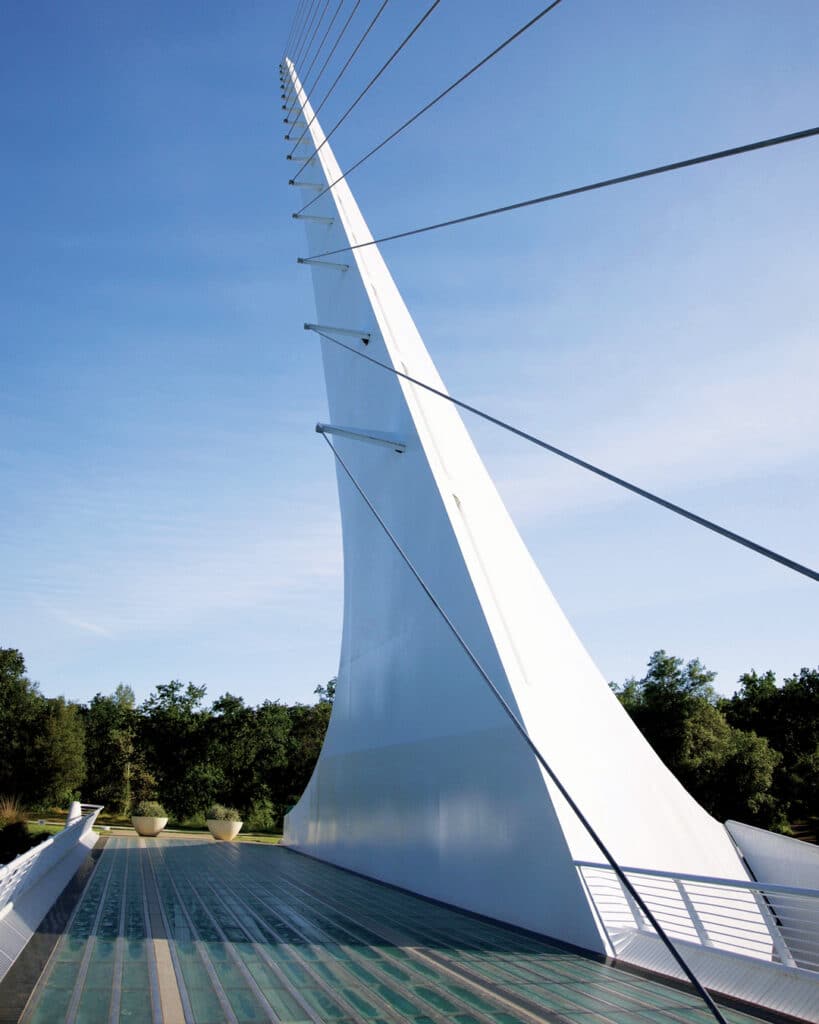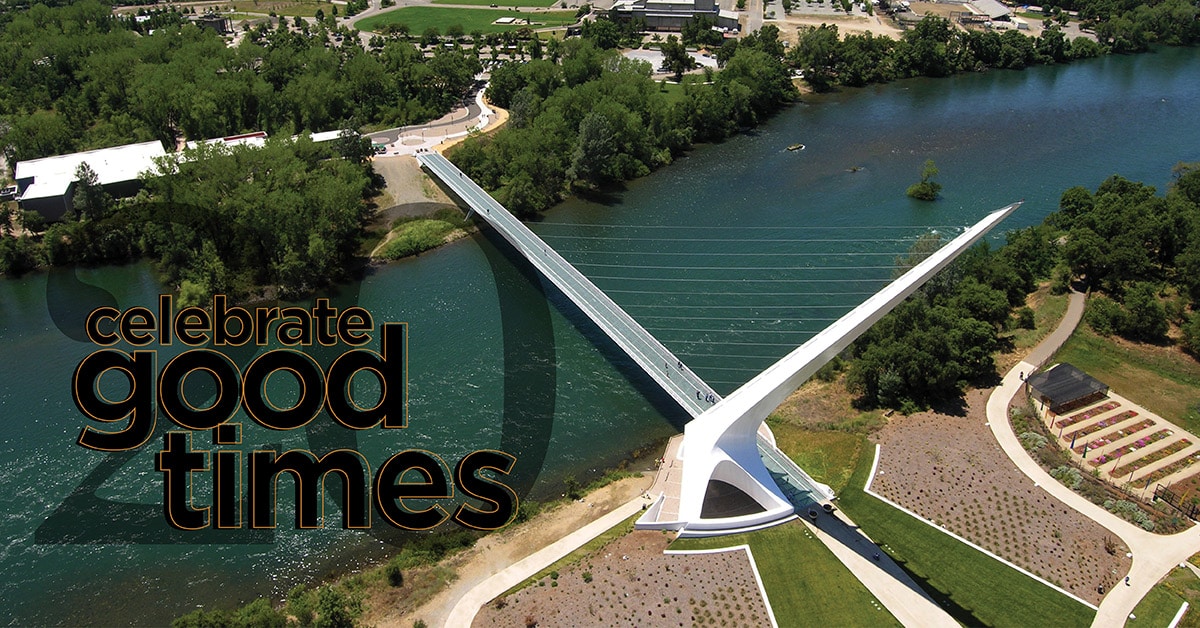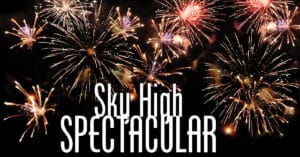Celebrate Good Times
Sundial Bridge Celebrates 20 Years…
On Independence Day in 2004, an architectural marvel known as the Sundial Bridge opened to the public in Northern California. The Sundial Bridge arguably put Redding on the map, acting not only as a link between features at the Turtle Bay Exploration Park and Sacramento River trail system, but also acting as one of the world’s largest working sundials.
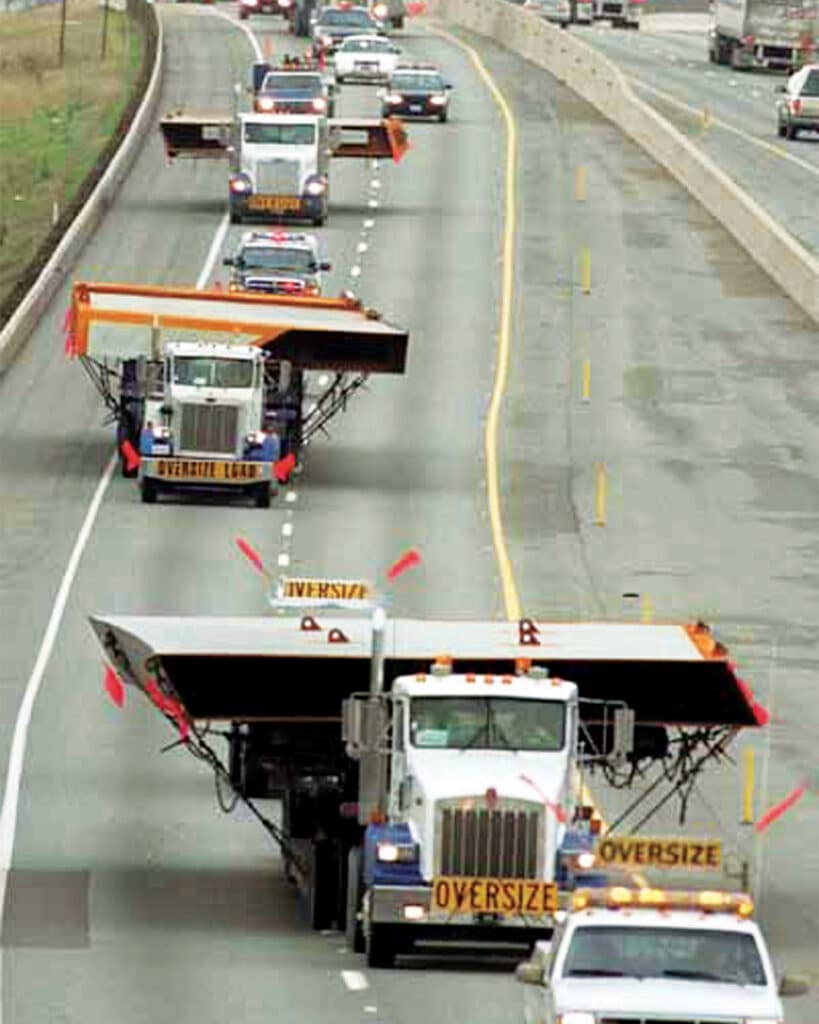
Turtle Bay Exploration Park Marketing Director Seth McGaha says the idea to build the Sundial Bridge came about after the museum on the south side of the Sacramento River and the McConnell Arboretum
and Botanical Gardens on the north side were built.
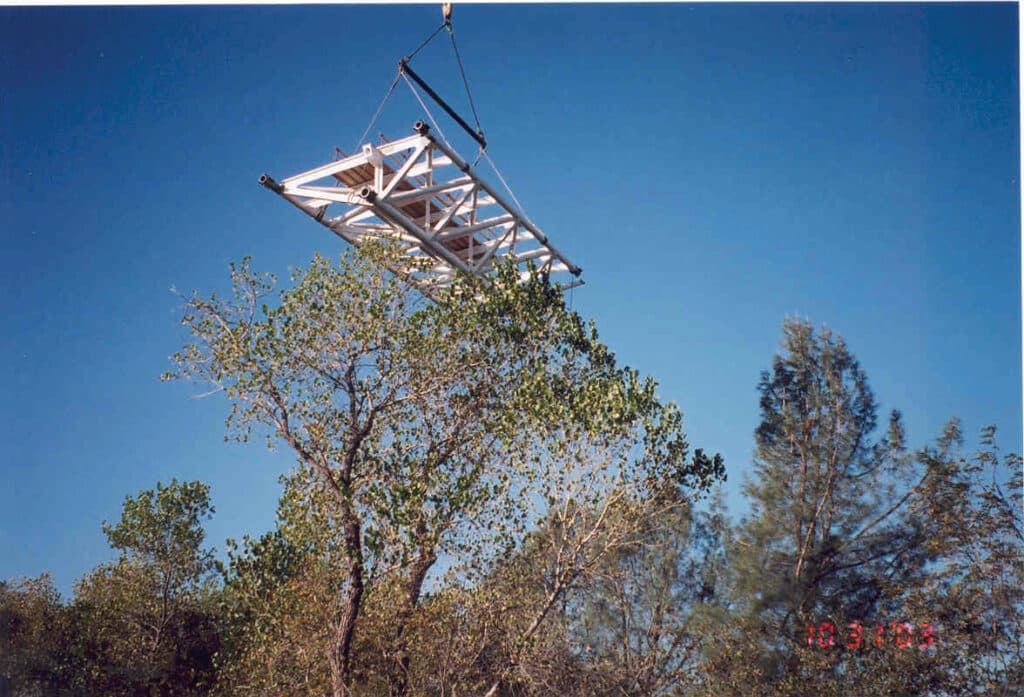
“There needed to be a way to cross the bridge to connect both campuses,” McGaha says. “Instead of just a regular pedestrian bridge, they wanted something that was functional that could also drive tourism,” he adds.
The City of Redding budgeted a couple million dollars to build a basic pedestrian bridge, but the McConnell Foundation was instrumental in kicking in most of the money to make it the iconic landmark that it is today, the project totaling around $24 million.
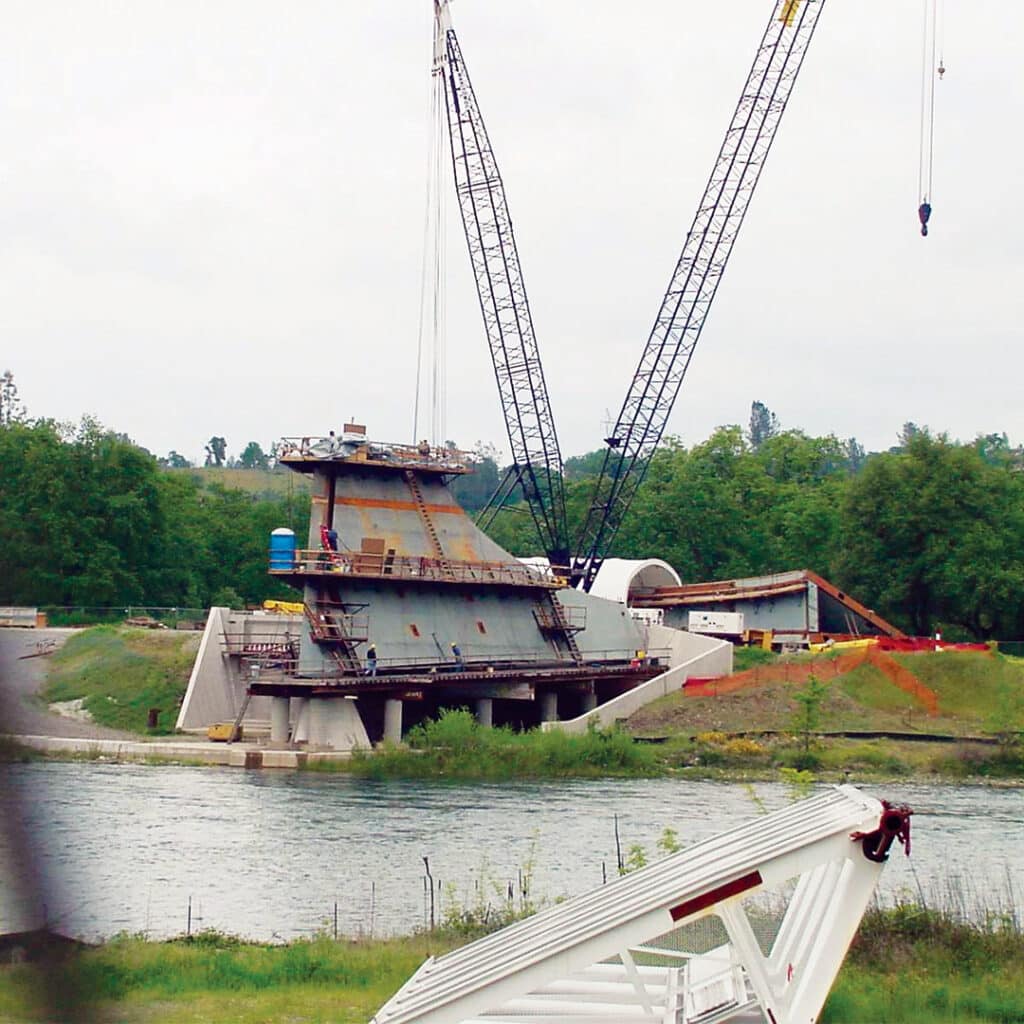
They hired famed Spanish architect/engineer Santiago Calatrava to come up with the unique pedestrian bridge concept, made up of a tilted 217-foot pylon and 580 tons of steel/cantilever tower, along with a walking deck constructed of 200 tons of glass supported by approximately 4,300 feet of cable. A steel truss resting on a 115-ton concrete and steel foundation stabilizes it. The 700-foot bridge doesn’t touch the water to protect spawning salmon and the natural environment below.
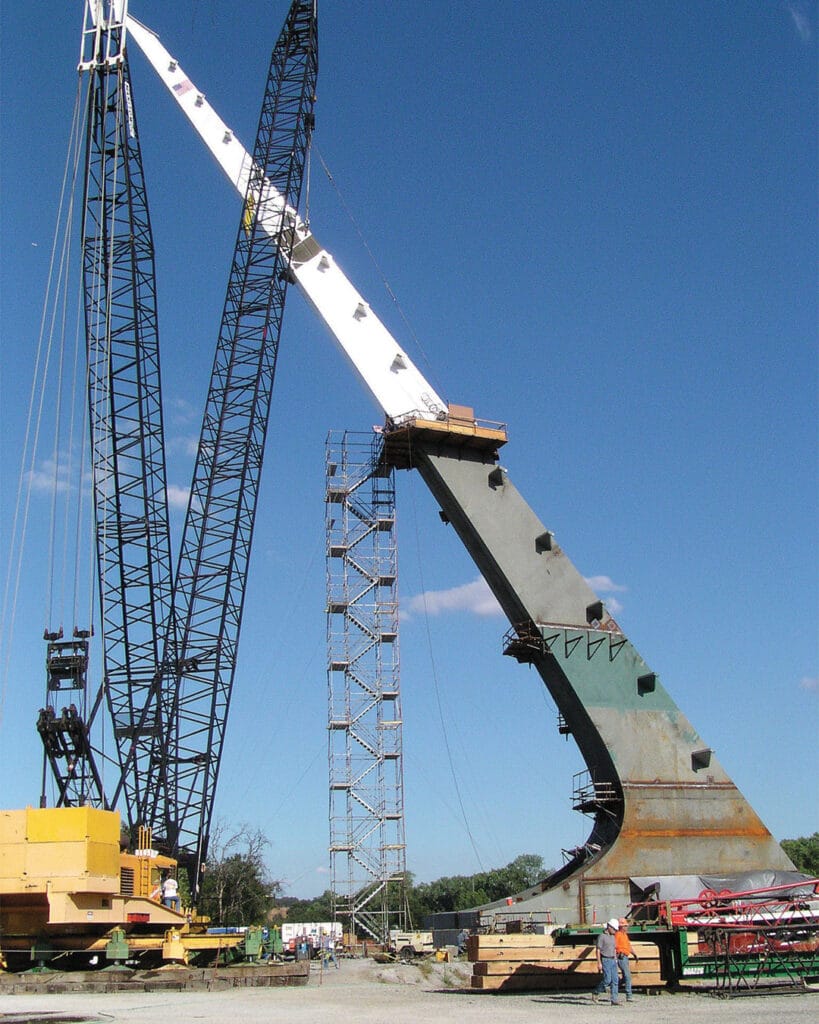
The thick translucent glass walking path takes on a cyan or aquamarine color that really pops at night. On the north side of the bridge underneath the support tower, the round dial markers (circular balls covered in broken white tile mosaics) show the time so when the sundial casts a shadow over it, you know where you are in the day. However, since the sundial’s shadow is so prominent, it can only record the hours between 11am and 3pm. It can also be hard to get an accurate reading of the time in the winter because of how the sundial’s large shadow casts into the arboretum. Most often, kids can be seen practicing their time-telling around the markers in the summer months when the shadow moves about a foot a minute.

The Sundial Bridge has always been free to access and gets close to 500,000 visitors per year. Turtle Bay installed a tracker five years ago at the bridge that caught an average of 1,000 to 2,000 people walking across it on any given day.
“I’ve been here for seven years, and I love its accessibility. Anyone can visit it year-round, and it’s representative of architecture, nature, and human achievement. It also offers a view of the river that would be impossible to see otherwise,” McGaha says.
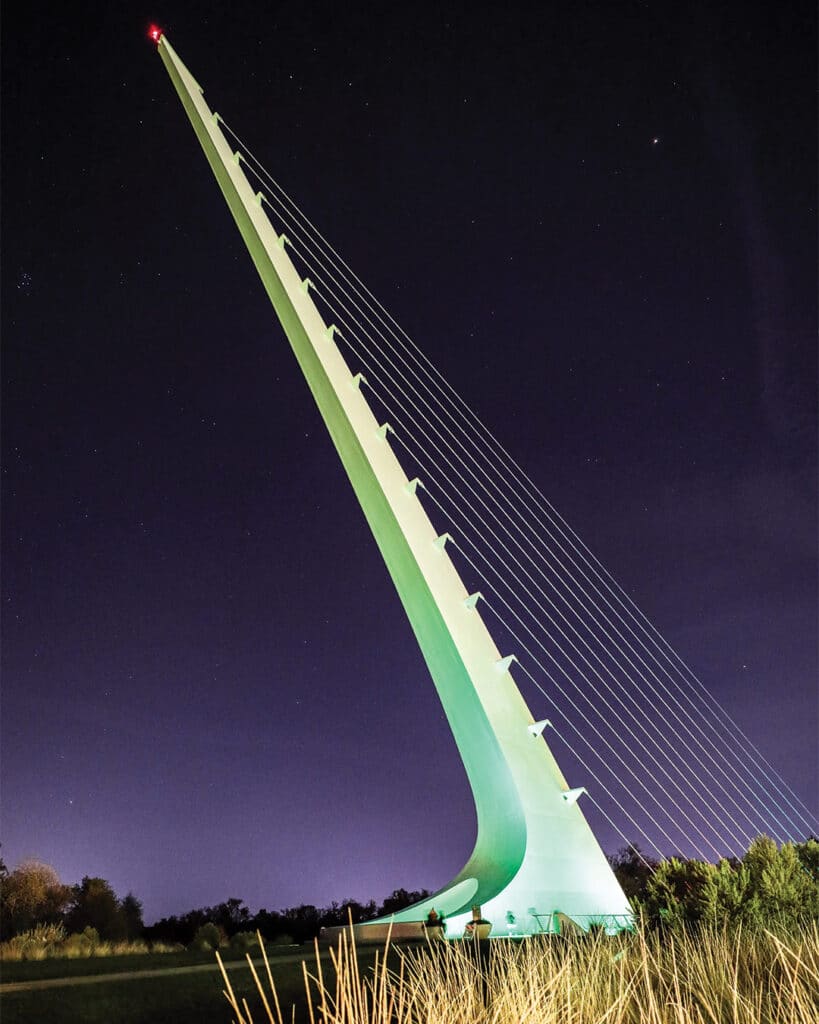
Turtle Bay holds some of its biggest annual fundraising events at or near the bridge, such as Brews by the Bridge and Garden of Lights. Anywhere from 1,000 to 2,000 people attend the one-night-only Brews by the Bridge summertime event, while the Christmastime Garden of Lights is a multiweek event that draws around 90,000 people throughout December. “It’s really increased our visitorship,” McGaha says of its biggest event of the year. The Sundial Bridge can also be rented out for events that are unaffiliated with Turtle Bay, such as for weddings, 5K runs and marathons.•
Turtle Bay Exploration Park will be commemorating the 20th anniversary of the Sundial Bridge on June 28.
Visit www.turtlebay.org for details.
